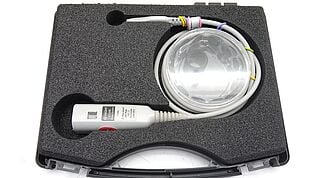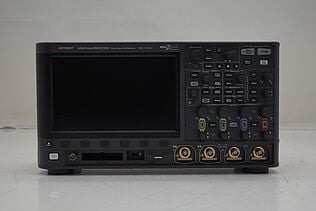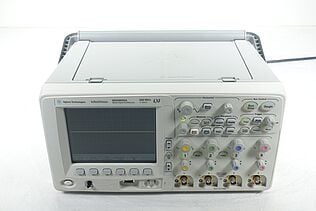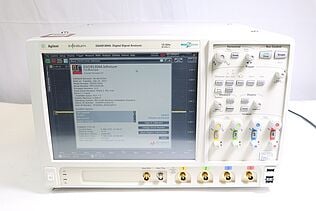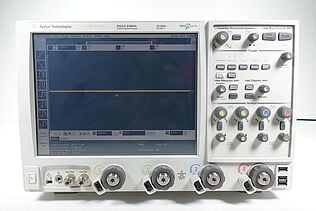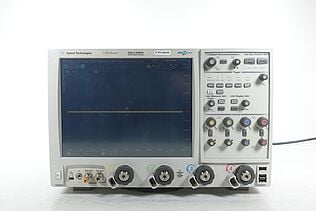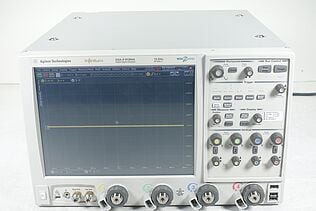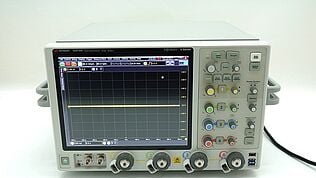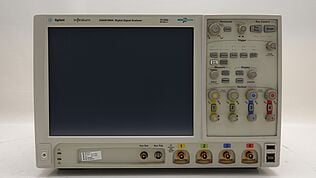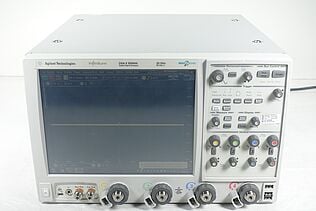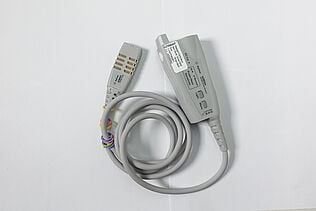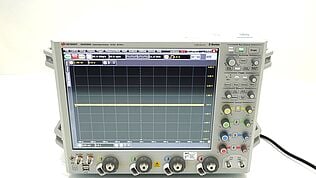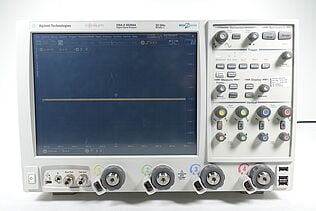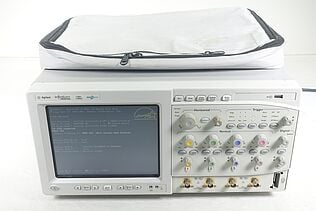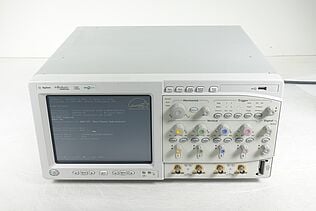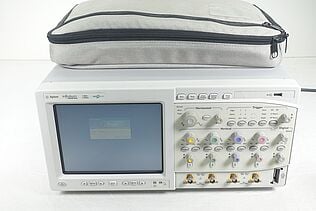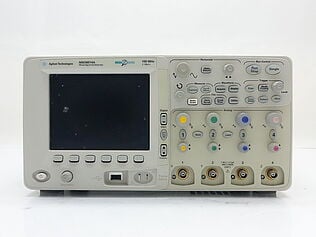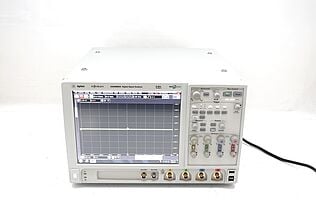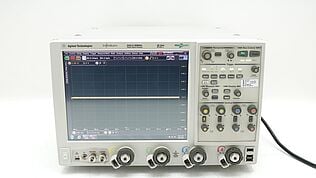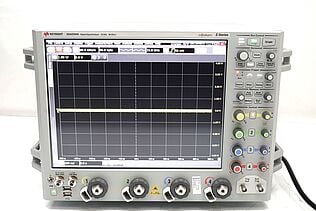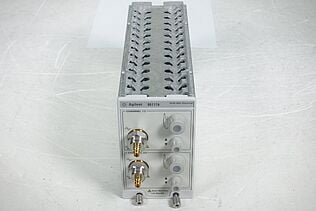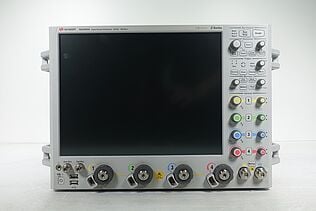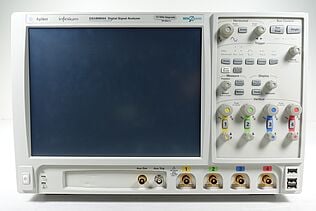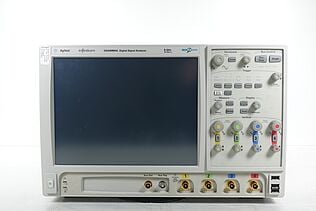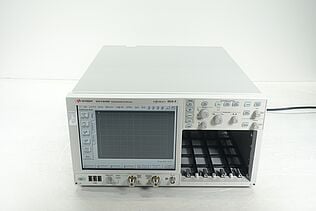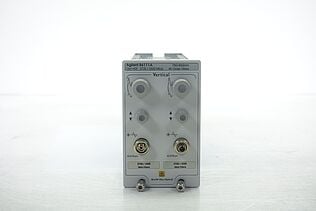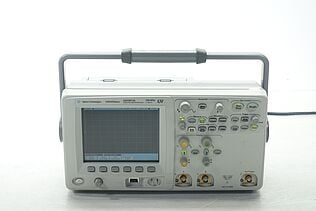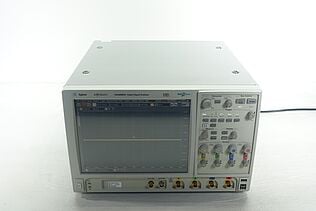In the world of digital signal processing, a signal is a representation of data that is modified to visualize its form. In their simplest form, signals carry information between different systems and devices. Digital signal processing (DSP) is modifying digital signals to improve or enhance their characteristics. This process can involve changing the signal's
- Frequency
- Amplitude
- Phase shift
- Any other variable related to a signal's characteristics
You will find DSP in a wide variety of applications, from audio signal processing to video streams and editing and even in radio communications. DSP is also used for noise cancellation and speech processing, making it essential to engineering workflows and modern consumer electronics.

| Key Takeaway |
|---|
| Digital signal processing is modifying digital signals to improve or enhance their performance for specific applications. |
Buy Oscilloscopes at a Great Discount
What Is Signal Sampling?
Imagine a signal as a continuous waveform. To modify it, we need to sample that signal by breaking it down into small discrete chunks called samples. Each sample is then digitized and stored in the system. This process is known as sampling.
You can then modify the sampled signal’s frequency and amplitude to achieve the desired results. Digital signal processing, with the help of powerful algorithms and sophisticated tools, allows you to enhance or degrade the quality or shape of a signal to meet your needs.
What Are Time and Space Domains?
A signal is represented by its amplitude and temporal (time) and spatial (space) domains. Signal processing algorithms modify these two variables to achieve your desired results.
- In time domain analysis, an algorithm will analyze the signal's frequency over time and look for patterns or trends in its behavior.
- In space domain analysis, algorithms will look for patterns or trends in how the signal behaves over a specific distance or area.
Once it has analyzed the data, you can adjust its parameters to enhance or modify the signal. Modifying these two domains can standardize levels and clarify a digital signal.
What Is Frequency Domain?
If you want to understand the signal better, then frequency domain analysis is a better option. This type of analysis looks at how often each frequency component is present in the signal, allowing you to identify patterns or trends in its behavior.
Think of frequency domain analysis as a representation of the signal’s energy distribution over a range of frequencies, showing each frequency component as a point in space. By analyzing these points and their relationships to one another, you can gain insight into how the signal is behaving over time and/or space.
The frequency domain helps identify noise or distortion in a signal and to improve the signal quality. Frequency domain analysis is one of the most common methods used in digital signal processing and has many applications.
What Is the Discrete Fourier Transform?
The Discrete Fourier Transform (DFT) is a powerful tool used in digital processing. Through the use of digital filters, it converts a signal from its time domain to its frequency domain. This conversion allows you to analyze the frequencies present in a signal, identify patterns or trends, and adjust parameters accordingly.
You use DFTs for many tasks, such as
- Filtering noise.
- Improving signal quality.
- Adjusting levels.
- Detecting patterns and extracting information from the signal.
It is an essential tool for any engineer or audio-processing technician working with digital signals.
What Is Digitization?
Digitization is the process of converting analog signals into digital ones. When digitizing a signal, it is broken down into small discrete chunks known as samples. Each sample is then represented by a set of numerical value and stored in the system.
This method makes it easier to modify the signal since each sample is modified individually without affecting the rest of the signal. Digitization also allows you to use powerful algorithms and sophisticated tools to enhance or modify a digital signal.
What Is Quantization?
Quantization is converting a large sampled digital signal into a specific smaller range of values. Quantization can reduce noise or adjust levels in a signal. Setting an appropriate quantization step size ensures the signal remains within its desired range without distortion or unwanted noise.
What Is Autoregression Analysis?
Autoregression is a signal processing technique that uses past values of the signal to predict future ones. This method allows you to analyze how the signal will likely behave over time and adjust parameters accordingly.
Since it looks for trends or patterns in the data, autoregression identifies issues and improves the signal's quality. It is also helpful for reducing computational complexity, as it only requires a small number of samples to get an accurate prediction.
What Is Z-Plane Analysis?
Z-plane analysis is a signal processing technique that looks at how the signal behaves in the z-plane. The z-plane is a two-dimensional digital representation of the signal's frequency and time domain characteristics.
Similar to autoregression, z-plane analysis identifies trends or patterns in the signal. It is also useful for
- Improving signal quality
- Adjusting levels
Reducing computational complexity
Key Takeaways |
|---|
|
Browse Oscilloscopes at a Great Discount
Select up to 3 instruments to compare
Enable Notifications
In order to use this feature, you need to enable notifications.
Manage notification preferences
Keysight Oscilloscopes
Digital signal processing and oscilloscopes can work together to provide a comprehensive view of a digital signal. Oscilloscopes are used as an initial tool for visualizing the waveform of a signal, while digital signal processing offers advanced analysis techniques to enhance its accuracy and clarity.
At Keysight, we offer a range of Used and Premium Used oscilloscopes to meet the needs of any engineer working with digital signals. With superior performance and precision, our oscilloscopes provide the perfect platform for digital signal processing.
Visit Keysight's Used Equipment Store to see a wide range of oscilloscopes to find the right one to fit your needs.

Subscribe to Get Our Latest News, Updates, and Articles.
Popular Used Oscilloscopes
Keysight Used Oscilloscopes offers a wide range of industry leading pre-owened oscilloscopes, ranging from older generation Agilent oscilloscopes to the newest Keysight oscilloscope models. So whether you are a fist time buyer, replacing a model like-for-like or looking for upgrade – we have something for you.
